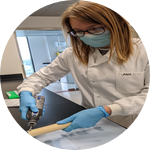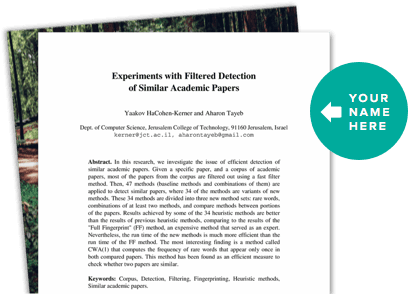About This Project
Hippo ivory trade may be on the rise due to restrictions on elephant ivory. However, it is difficult to visually identify what species the ivory came from. My previous research identified an area of genetic code ('primer pair') specific to hippos. To ensure that the primer pair is unique only to hippos, this research aims to test that the primers do not amplify DNA of other species commonly found in the ivory trade. The result of this experiment will create a low-cost ivory ID method.
Ask the Scientists
Join The DiscussionWhat is the context of this research?
There is concern within national governments and conservation organisations that there is a rise in common hippopotamus (Hippopotamus amphibius) poaching for ivory due to the increasing restrictions on elephant ivory trade (Wildlife and Countryside Link 2019). There is currently a legal trade in hippopotamus ivory in most countries and evidence of a significant illegal trade (Andersson and Gibson 2017, Moneron and Drinkwater 2021). Very little is known about the extent of the hippopotamus ivory trade and whether or not it is having a negative impact on the survival of the species.
Ivory is often 'worked' which means it has been carved into an ornamental item e.g. jewelery, knife handle or decorative object. For this reason it can be difficult to visually identify which species the ivory came from. Molecular genetic tools have been developed for elephant ivory and rhino horn identification. A simple genetic tool is needed to monitor the legal and illegal trade in hippo ivory.
What is the significance of this project?
Molecular genetic techniques have two main uses in combating the illegal wildlife trade. Firstly, in enforcement: to provide forensic evidence which can contribute towards prosecution (Ewart et al 2018). Secondly, for intelligence: for example, to provide information on trade routes and poaching hotspots (Wasser et al 2015). In forensic casework the main genetic tests are species ID (McEwing and Ahlers 2016).
Once fully tested, this genetic tool will give a simple 'yes' or 'no' answer to the question 'Is this item hippo ivory?'. This PCR test uses basic lab equipment without the need to sequence the DNA. The lab equipment needed for this test is available in labs worldwide and so countries could use this test to find out if an item if from a hippo.
With this information they may be able to prosecute people who are illegally hunting hippos or trading their teeth. They would also be able to monitor trade and check quotas are not being exceeded.
What are the goals of the project?
The goals of this project are to test the genetic primers against other species commonly found in the ivory trade and check that they only amplify hippo DNA. Species include elephants, warthog, cattle, walrus, zebu and goat. We will then optimise the method, for example by changing variables such as temperature, time and the number of cycles within the PCR. Next, we will validate the test by checking it works in other labs and in other conditions. Finally our goal is to publish the test and to promote it within wildlife forensic networks to ensure it is used to inform on hippo ivory trade and, where necessary, aid prosecutions for illegal trade.
Budget
The funding asked for here is to cover the consumable materials needed for the project and one equipment item.
The Dremel drill is required to powder samples of hippo ivory, elephant ivory and other items found in the ivory trade such as cow bone. The rest of the funding will be used to extract the DNA from these samples, purchase the hippo-specific primers and to test these by running multiple PCR and gel electrophoresis tests in the lab with the different species. After these tests have been run we will be able to say if the hippo-specific primers amplify DNA from other species or if they only amplify hippo DNA. Kings College London have agreed to fund £1000 towards this project and this additional funding will cover using the lab at ZSL, sourcing ivory samples, purchasing primers and sending samples away for sequencing.
Endorsed by
 Project Timeline
Project Timeline
The initial lab work will be completed in April-August 2025. This hippo ivory, along with the other species found in trade, will be tested in this initial lab work phase.
If this is successful we will progress with the validation testing in late 2025. This will involve colaborating with around two other labs to see if the test works in their lab. The aim would then be to write a paper and submit it for publication in 2026.
Mar 29, 2025
Project Launched
Apr 30, 2025
Source Hippo Ivory and bone or other samples from organisations across the UK, e.g. UK Border Force.
Aug 31, 2025
Complete initial lab work testing hippo ivory and other species found in trade
Dec 31, 2025
Work with two other labs worldwide to carry out the PCR on hippo ivory in their lab.
Mar 31, 2026
Write up the findings for publication
Meet the Team
Katie Shaw
I am interested in science and nature and, after graduating with a Biology BSc from the University of Sheffield, UK I have worked for a range of environmental charities. I currently work for a community gardening charity, looking after green spaces for people and wildlife in London, UK. I graduated from the University of Edinburgh in 2021 with a Distinction for my MSc in Applied Conservation Genetics with Wildlife Forensics. While looking for a dissertation project I was in touch with the UK charity TRAFFIC who were drafting a report on the possible increase in demand for hippo ivory due to tightening of laws around elephant ivory trade. There have been several simple genetic tests developed for elephant ivory and rhino horn but not for hippo ivory. I would like to complete the project I started by carrying out further testing in the lab and hopefully enabling labs worldwide to use this test to gather information on hippo ivory trade.
Lab Notes
Nothing posted yet.
Project Backers
- 36Backers
- 37%Funded
- $1,101Total Donations
- $30.58Average Donation


